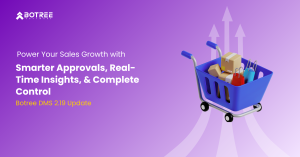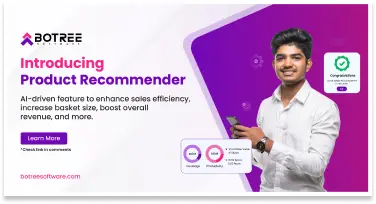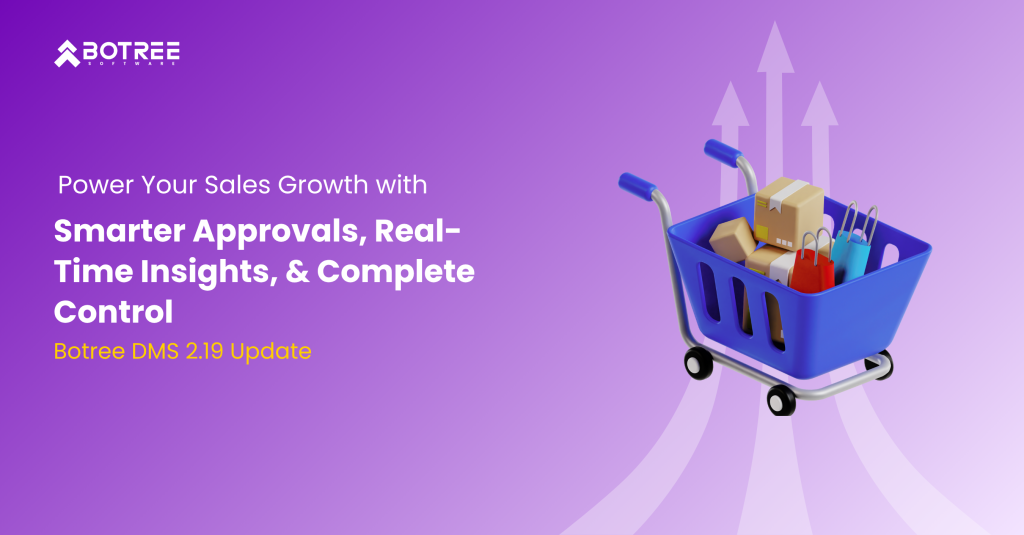
Power Your Sales Growth with Smarter Approvals, Real-Time Insights, & Complete Control with DMS 2.19 Update
Power Your Sales Growth with Smarter Approvals, Real-Time Insights, &

Power Your Sales Growth with Smarter Approvals, Real-Time Insights, &

Introducing the AI-Driven Product Recommender to Maximize Basket Size at Every Outlet
We are thrilled to introduce our latest innovation, the Product Recommender, designed to transform the way businesses optimize their product offerings and enhance sales productivity.

Imagine managing a busy sales network where orders, incentives, and reports move across multiple systems every day. Field teams need quick approvals, real-time data, and accurate tracking, but switching between tools slows everything down.
DMS 2.19 solves that with new updates built to connect every step of your sales process.
Here’s what’s new:
This release fixes long-standing gaps in tracking, approvals, reporting, and compliance. Each enhancement helps teams work faster, make better decisions, and keep data accurate across the entire network.
Let’s look at a common issue. Users couldn’t view a consolidated summary of their scheme utilization in RSFA. They had to check multiple places to know how much benefit they earned across different schemes. This made it hard to plan purchases or make the most of available offers.
The Solution: We’ve introduced the Scheme Utilization Summary feature in RSFA. It gives users a single view of all scheme benefits and utilization details, helping them track and manage their earnings more effectively.
Scheme Types Covered:
Date-Based Filters:
A distributor checks their RSFA dashboard. The Scheme Utilization Summary shows total points earned, free products utilized, and remaining balances for active schemes. Instead of tracking manually, the distributor can now see how close they are to the next benefit slab and plan purchases accordingly.
Consider this situation. A salesperson checks their dashboard to track results. ECO and Billing Efficiency appear only as numbers, with no percentage view to show progress toward targets. Without that context, it’s difficult to assess performance, identify gaps, or compare results across the team.
The Solution: We upgraded the SFA dashboards to include percentage-based KPIs and added new metrics with real-time data synchronization between SFA and DMS.
KPI Percentage Enhancements:
KPI Visibility:
Target KPIs:
ETL Configuration:
Reporting:
SFA Dashboard Visibility:
Color Bar Indicators:
A sales manager opens the SFA dashboard and instantly sees performance across key KPIs in percentages. ECO and Billing Efficiency now show both numeric and percentage values. Red, amber, and green bars make it clear who is on track and who needs support. Geo-based target replication ensures every salesperson’s goals are aligned. Managers can now make quicker, informed decisions.
Let’s look at a scenario. A salesperson books an order in SFA during a store visit. The order gets confirmed right away, even if quantities or details need review. There’s no approval layer, no verification, and no control before it reaches DMS. This leads to incorrect orders, missed checks, and reporting issues downstream.
The Solution: We’ve introduced a multi-level approval process for SFA orders. Orders now pass through defined approval stages before confirmation, giving you full visibility and control.
A salesperson books an order in SFA as usual. It moves to the first approver, who checks and updates quantities. The next approver reviews and confirms. Within minutes, the order appears in DMS for fulfilment. No duplicate entries. No confusion. Just a clean, verified approval flow from booking to delivery.
Let’s look at a real scenario. A distributor bills a non-GST customer for ₹2 lakh. The transaction doesn’t appear in the GSTR1 report because of the ₹2.5 lakh billing cap. As a result, smaller but valid sales remain unreported, affecting compliance and data accuracy.
The Solution: We’ve made the billing limit for non-GST customers configurable and refined how such transactions reflect in GSTR1 reports. This ensures complete and compliant reporting for all non-GST billing scenarios.
A distributor creates a ₹1.8 lakh bill for a non-GST customer. The transaction saves smoothly and reflects in GSTR1 reporting. Later, another unregistered customer without PAN is billed for ₹12 lakh. The system blocks the transaction and prompts a validation message. Every entry is now accurate, compliant, and traceable.
DMS 2.19 makes field operations simpler, faster, and more reliable. Each feature focuses on control, visibility, and efficiency—without adding complexity.
From multi-level approvals and real-time KPI dashboards to smarter scheme tracking and flexible billing rules, this version connects every part of your sales process. These updates help your teams act faster, stay compliant, and keep every transaction accurate across SFA, DMS, and reports.
Meet Christina Evangelin Ebinezer, our dynamic marketing associate at Botree Software. With a background in HR and marketing, and prior experience as a content writer, Christina brings a sharp eye for storytelling and a knack for crafting engaging blogs and marketing content. She’s passionate about turning ideas into words that drive impact. Outside of work, Christina finds joy behind the piano keys or the wheel—whether she’s playing a soulful tune or cruising down open roads.
